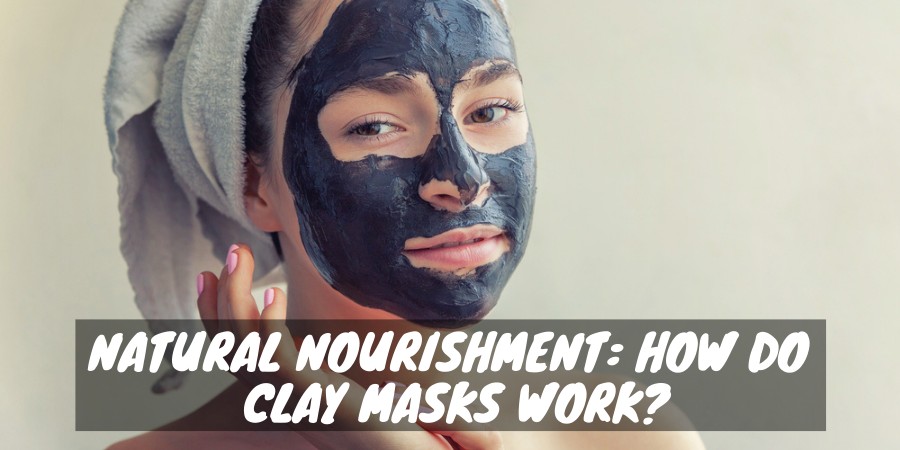Clay masks are all the rage in the skincare world right now.
Millions of people consider them indispensable tools in the quest for clear, smooth, beautiful skin.
But how do clay masks actually work? And what can they really do for your skin?
Read on to learn all the answers to your biggest clay mask questions.
What Is a Clay Mask?
A clay mask is exactly what it sounds like: a face mask containing natural clay.
Clay masks have been used for thousands of years. Evidence of their importance in beauty rituals can be traced all the way back to ancient Egypt and ancient Rome.
It’s thought that clay has been so popular because it’s so abundant in the earth. It’s a type of soil with a high mineral content that’s created by the natural erosion of stone over millions of years.
And when clay contacts water, it takes on a moldable, plastic-like quality that makes it perfect for applications like face masks.
How Do Clay Masks Work?
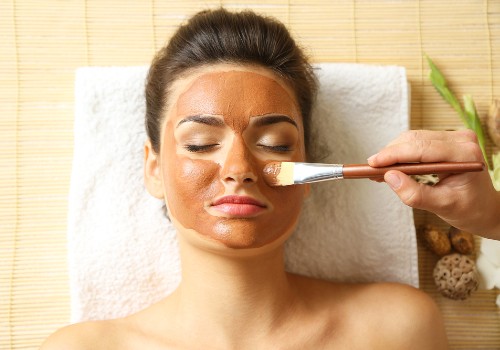
On a molecular level, clay masks work by exchanging the beneficial minerals in the clay for the unwanted grime and toxins in your skin.
When mixed with water, the clay takes on a negative charge, causing the positively-charged minerals within it to rest on its surface.
Many toxins in your skin, including mercury and lead, also have a positive charge. Because opposite charges attract, the toxins are drawn out of your skin towards the negatively-charged clay.
There, they’re exchanged with the minerals from the clay. Your clay mask literally swaps out its helpful minerals for your skin’s harmful impurities.
When you remove the mask, the toxins in your skin get removed along with it. What you’re left with is skin that’s clear, hydrated and loaded with beautifying minerals.
The Benefits of Clay Masks
Clay Masks Remove Toxins and Impurities from Your Skin
Pollution, smoke, dirt, bacteria and dead skin cells can all cause your skin to look and feel unhealthy.
When it’s bogged down with these nasty particles, your skin cells can’t breathe properly or retain appropriate moisture levels. As a result, they function suboptimally, struggle to heal from damage and die more quickly than they should.
Regular cleansing can only do so much to remove the toxins that reside deep within your skin.
A clay mask, on the other hand, can draw these toxins out from the deeper layers of your skin. The clay acts like a magnet for the toxins, as they’re more attracted to it than to your skin.
Clay Masks Reduce Shininess and Oiliness
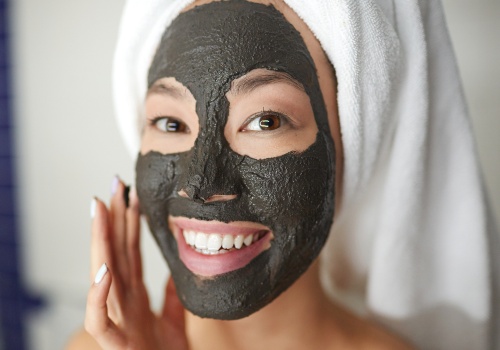
The same principle that causes clay to remove impurities from your skin also allows it to remove excess oil.
Clay masks can draw out oil from deep within your pores, unclogging them and reducing the shiny, uneven appearance of your skin.
By absorbing all that oil and grease from your skin, clay masks help prevent breakouts, making them great for acne-prone skin.
Clay Masks Rehydrate Your Skin
While overuse of clay masks can dry out your skin, they can actually have the opposite effect if they’re used properly.
Certain types of clay, especially red clay, leave a special mineral film behind on your skin. This film locks moisture into your skin and prevents it from evaporating throughout the day.
Other types of clay can also have benefits for your skin’s hydration, as the minerals left behind by the clay strengthen your skin. Stronger skin is better at retaining moisture, so you’ll see fewer dry, flaky patches after using a clay mask.
And many clay masks are formulated with hydrating ingredients like glycerin and hyaluronic acid, which deliver water directly to your skin cells.
Clay Masks Calm Inflamed, Irritated Skin
Your face feels tingly after using a clay mask because the clay increases your circulation.
The increase in circulation means that more oxygen is being delivered to your skin cells. Oxygenated skin cells are better at healing from damage and withstanding environmental irritants.
And the simple act of wearing a clay mask reduces your stress levels and helps you relax. This has benefits for your entire body, including reduced inflammation and redness of the skin.
When Should I Use a Clay Mask?
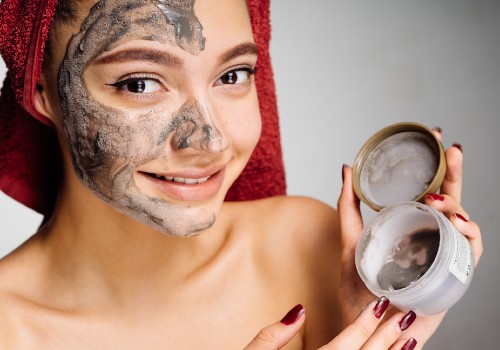
Some people like to make clay masks part of their regular skincare routine.
Others prefer to use them as needed to control breakouts and oiliness.
It’s up to you which route you’d like to take, but if you choose to use a clay mask regularly, make sure you don’t overdo it.
Once or twice a week is typically sufficient for most people. Those with especially oily skin may wish to use a clay mask up to three times a week.
On the other hand, those with dry skin should use a clay mask less frequently — once a week or once every two weeks.
But there’s also no harm in simply using a clay mask only during bad breakouts or other times when your skin needs extra help. Your skin won’t become dependent on the clay mask, so there’s no need to stick to a strict schedule.
Types of Clay Masks
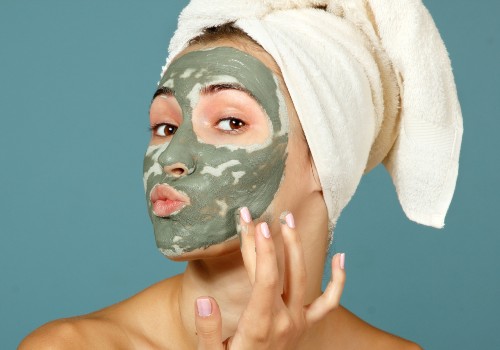
There are many types of clay, but in the face mask world, they’re typically grouped together by color.
Each color of clay has different benefits for your skin. Picking the right one for your skin type is crucial for success.
Black Clay Mask
Black clay is ideal for oily and acne-prone skin as it’s one of the most drying types of clay.
Known for its deep-cleansing and pore-shrinking abilities, black clay is loaded with detoxifying minerals.
This makes it excellent for those who live in high-pollution areas or who constantly battle with overactive sweat and sebum glands.
Red Clay Mask
Red clay’s high iron content gives it its unique color, but it also lends it incredible regenerative properties.
Iron oxygenates your skin cells to promote healing, so it’s great for damaged or aging skin.
Additionally, red clay masks tend to be gentler than other clay masks, making them ideal for those with sensitive skin.
White Clay Mask
White clay masks are suitable for most skin types thanks to their balanced effects.
They’re not as drying as other clay masks, so those with dry skin can use them without worrying about flakes and redness.
White clay is a fantastic exfoliant, removing dead skin without irritation. Many people find that their skin responds better to white clay masks than to scrubs and other exfoliants.
How to Apply a Clay Mask
Applying a clay mask is easy! Most of your time will be spent waiting for the mask to dry — the actual application process takes just a couple of minutes.
Preparing the Mask
If you’re using a clay powder, you’ll first need to mix it with water to create a paste. Follow the manufacturer instructions for mixing the clay, making sure to use a glass, wood or plastic bowl (metal can alter the charge of the clay, making it less effective).
Some clay masks come in paste form in a tub or tube. If you’re using one of these masks, there’s no need to mix it in a bowl.
Applying the Mask
Using a flat foundation or face mask brush, apply the mask to your clean, dry face in an even layer. It doesn’t need to be thick — ⅛ inch is plenty, and applying a thicker layer won’t make the mask more effective.
Now sit back, relax and let the mask work. The product label will specify the appropriate drying time for your particular mask, but it generally takes 5-10 minutes.
If you have oily skin, leave the mask on for the full drying time. But if your skin is dry, remove the mask once the edges have dried but before the rest has hardened.
Removing the Mask
To remove the mask, rinse it off using your clean fingers and warm water. Gently rub the mask in a circular motion to detach it from your skin.
Avoid letting the clay go down your drain, as it can harden and cause clogs in the pipes. It’s better to remove it into a bowl, then scoop the clay out of the water and dispose of it separately.
Pat your face dry with a towel, then apply a light moisturizer. Your skin may appear a little red for up to an hour after removing the mask due to increased circulation, but will then return to normal.

